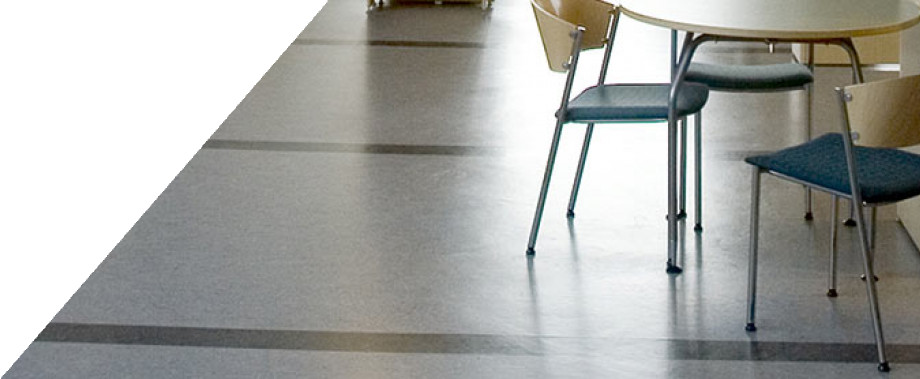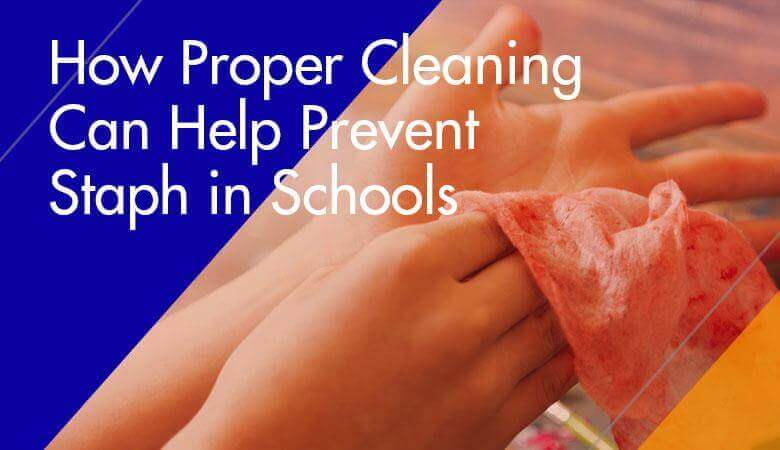How Proper Cleaning Can Help Prevent Staph in Schools
Staph. It might as well be a four-letter word because it’s definitely dirty. Staphylococcus aureus, more commonly known simply as “staph,” is a type of bacteria commonly carried on the skin or in the nose of healthy people. Methicillin-resistant Staphylococcus aureus (MRSA) represents a group of bacteria that have developed resistance to several antibiotics, including methicillin.
MRSA is most commonly spread in places where people are in close contact, making schools and locker rooms a hotbed for these nasty bacteria that can live several weeks outside the body on surfaces. As classes prepare to convene this fall, it’s important that your janitorial team review their cleaning procedures to help stop staph in its tracks. Here are a few ways to ensure your building remains a staph-free zone:
- Clean and disinfect critical touch points. Beyond routine cleaning, which is essential to keep germs at bay, focusing on critical touch points, such as doorknobs, light switches, desktops, faucets, and sports and gym equipment is key. According to the Centers for Disease Control and Prevention (CDC), “there is a lack of evidence that large-scale use (e.g., spraying or fogging rooms or surfaces) of disinfectants will prevent MRSA infections more effectively than a more targeted approach of cleaning frequently-touched surfaces.” Using a product, such as the Clorox® Total 360® System is ideal for targeting touch points. It provides superior coverage through electrostatic technology and delivers Clorox® disinfectants and sanitizers onto hard-to-reach surfaces. The CDC has also found that large surfaces, such as walls and floors, have not been directly associated with the spread of staph and MRSA.
- Use cleaning supplies properly. It’s important to always expressly follow the manufacturer’s chemical use instructions on cleaning products so they are used safely and appropriately. The CDC recommends cleaning surfaces with detergent-based cleaners or Environmental Protection Agency (EPA)-registered disinfectants, taking into consideration “dwell time.” Dwell time is the amount of time a detergent or disinfectant must remain on a surface before wiping it off in order to completely kill the bacteria. It is a common misconception that spraying and wiping is sufficient. It’s not. In many cases, the proper dwell time is 10 minutes or longer.
- Repair or dispose of damaged equipment or furniture that is unable to be cleaned properly. Any shared item that has a damaged surface making it unable to be cleaned and disinfected thoroughly should be repaired or thrown out.
- Protect electronics with cleanable covers. Electronics are sometimes a challenge since water can damage them. Protecting these items with a waterproof cleanable cover is a good practice. The Clorox® Total 360® System is also useful since it can cling to electronics and disinfects very well.
- Encourage students, teachers and staff to practice good hygiene, including thoroughly washing hands, keeping cuts clean and covered, avoiding contact with friends’ and coworkers’ bandages and not sharing towels, uniforms, razors, and other personal care items.
At 4M, we make sure our Team Members are armed with the latest and most successful cleaning methods to ensure your facility is always germ-free. It’s just another way we deliver the best, innovative, safe and sustainable cleaning and service solutions for your business. To learn more, give us a call or CLICK HERE to contact us.


